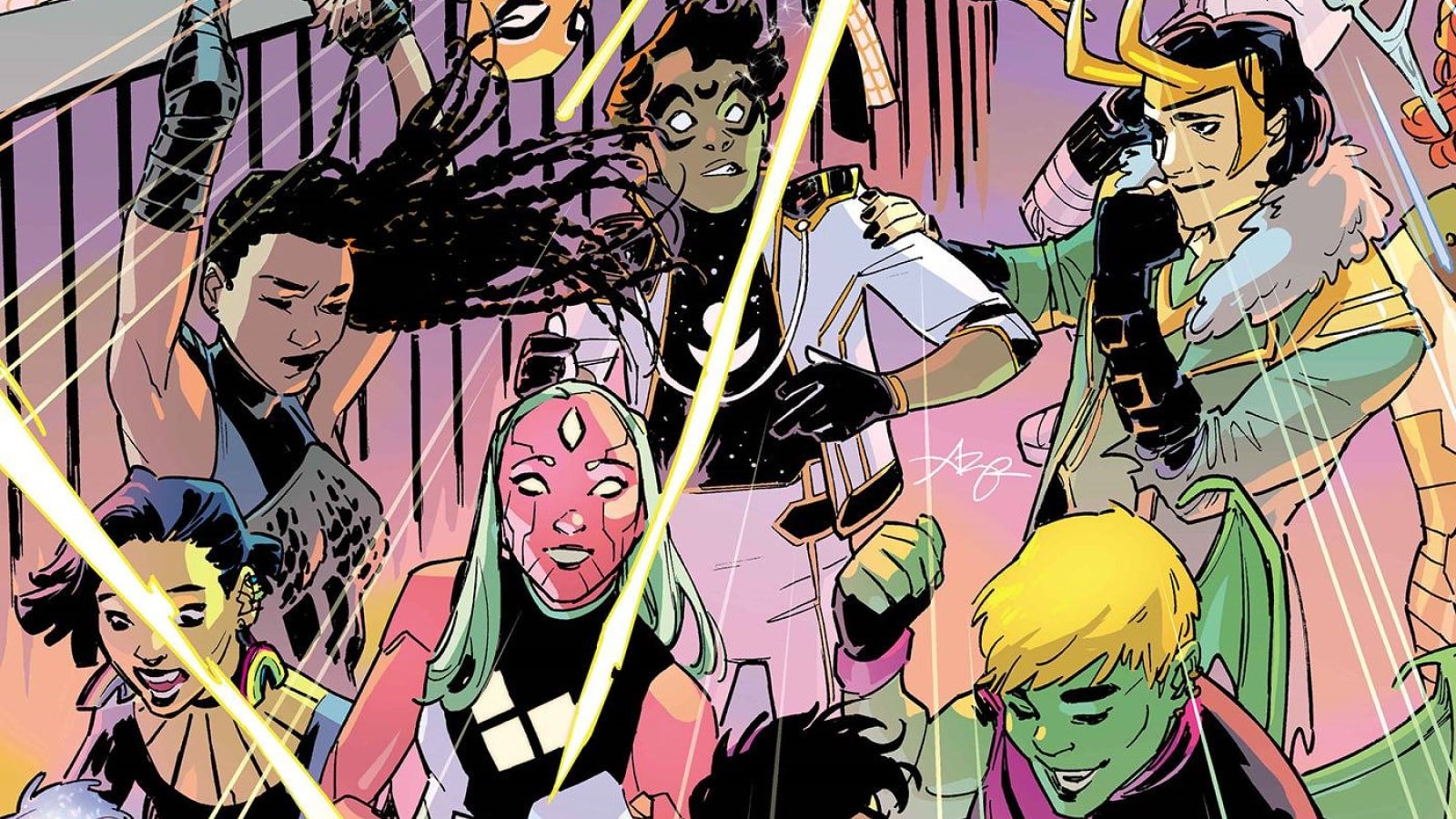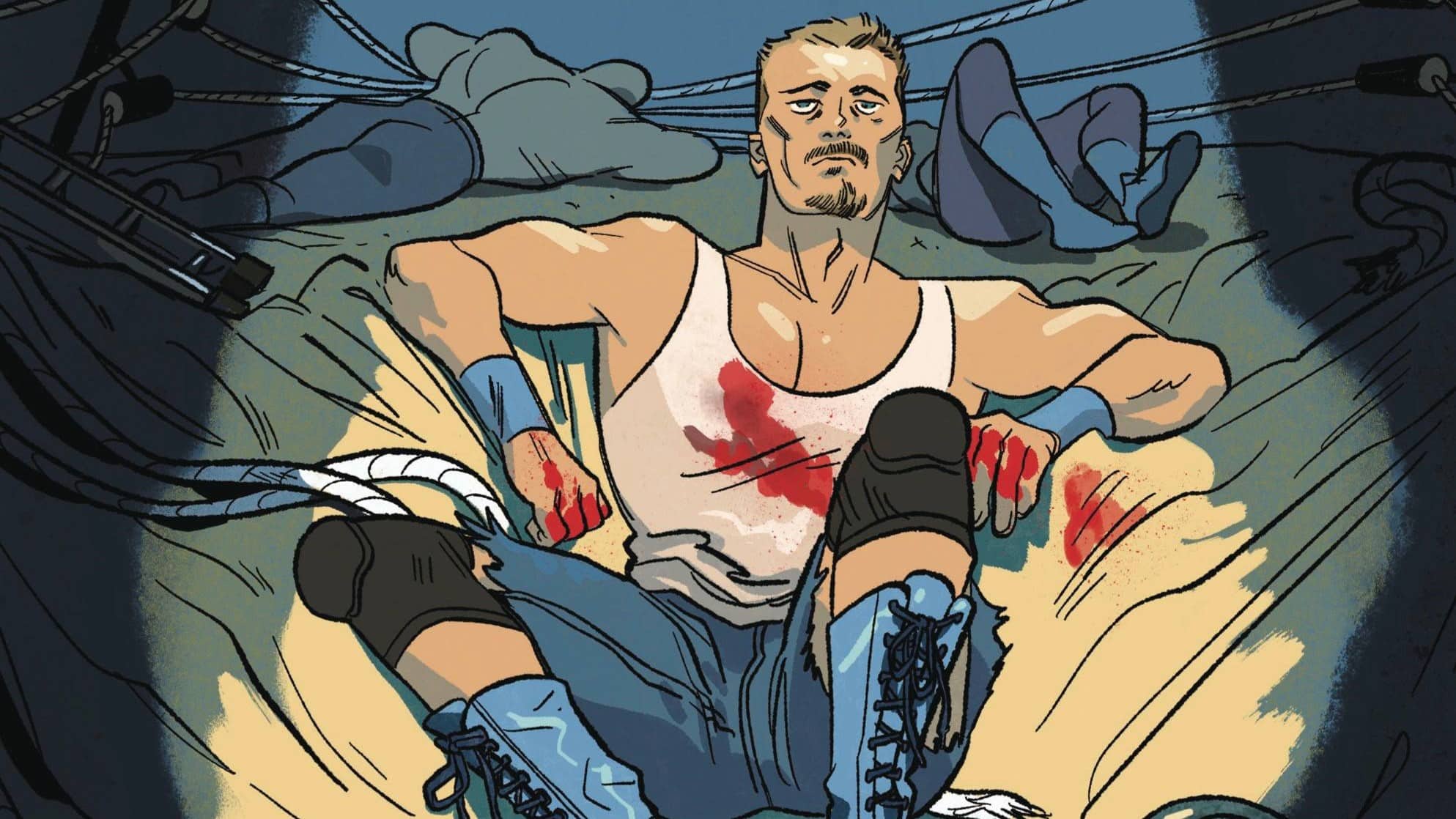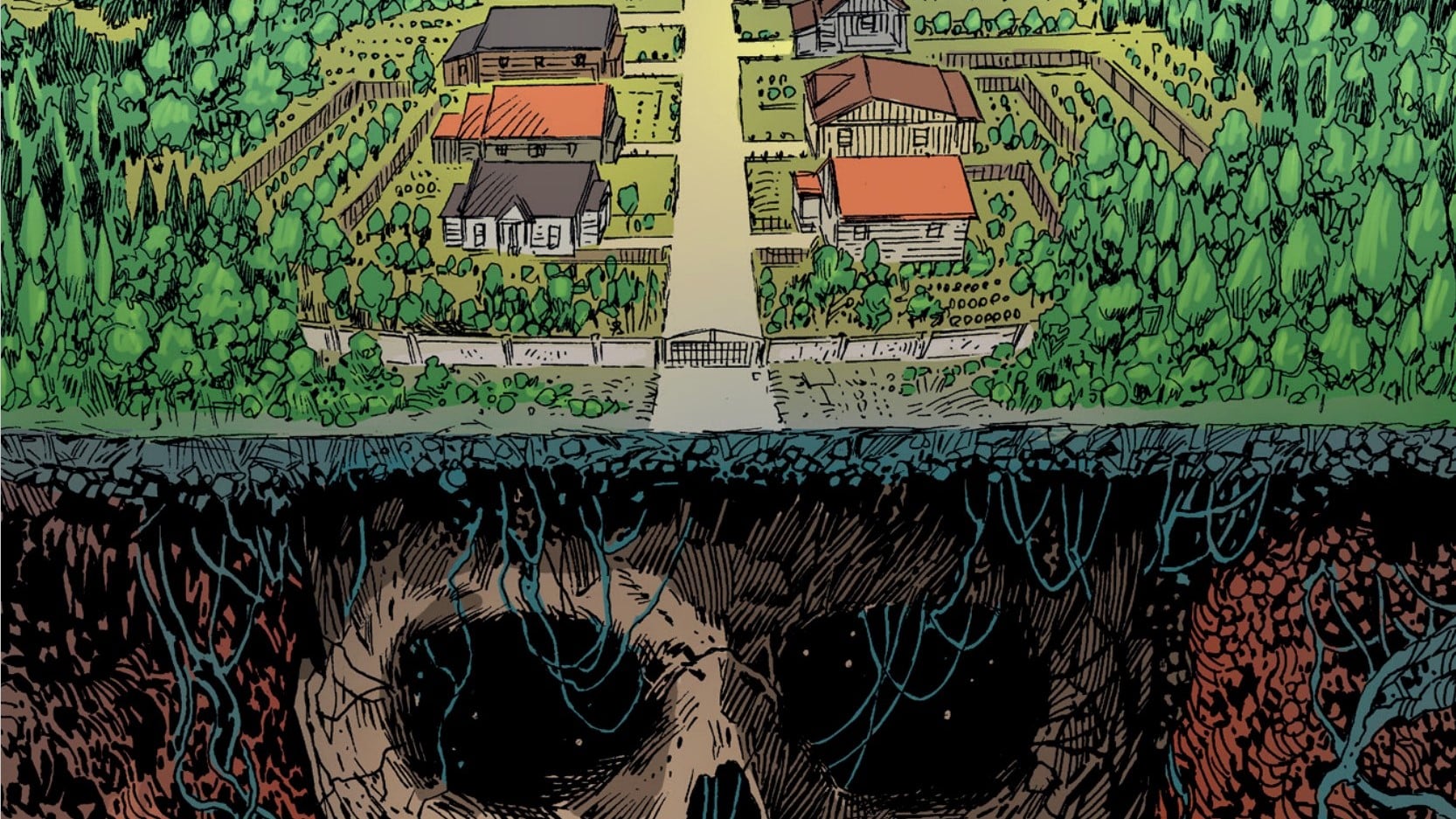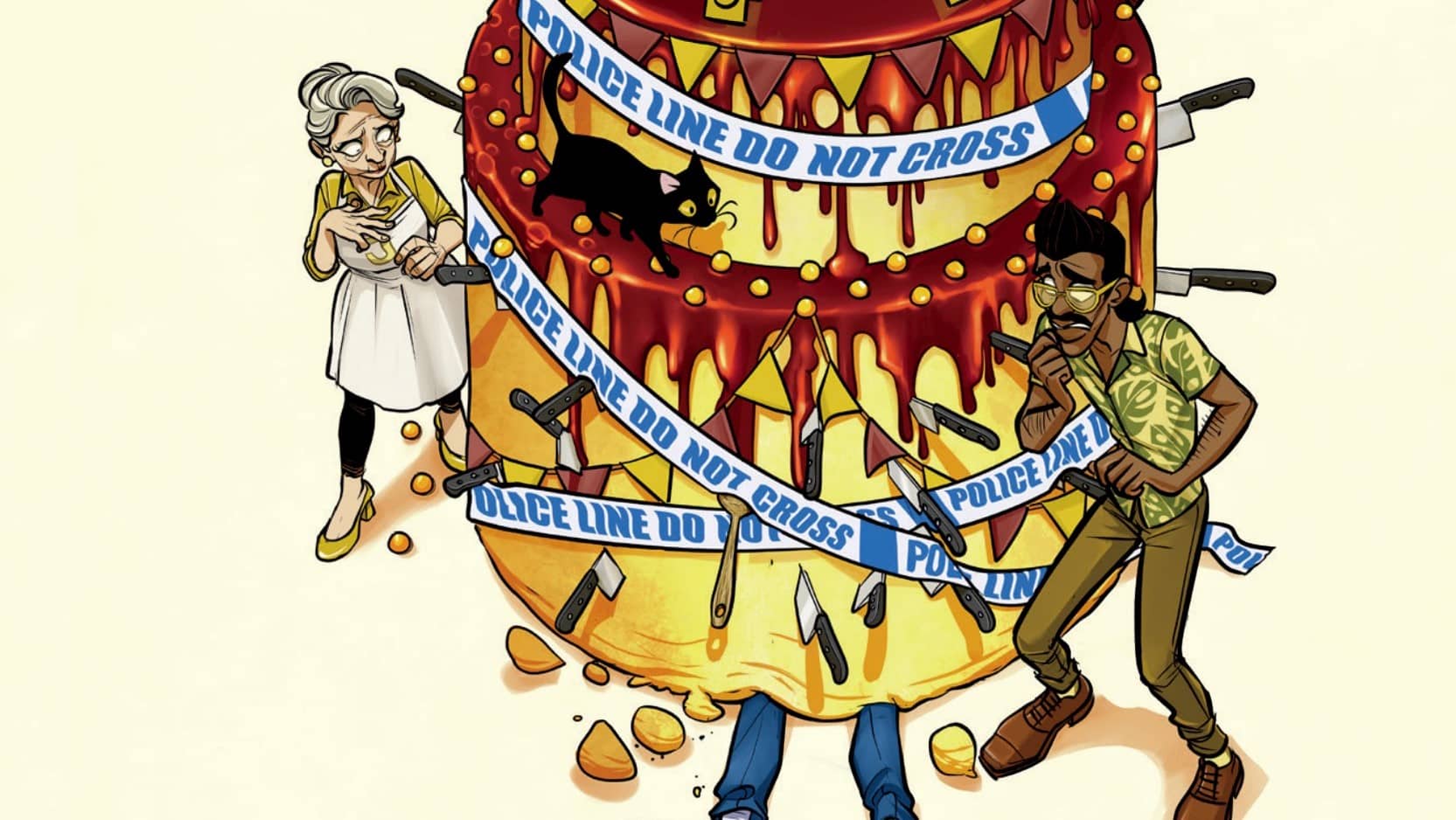Easton and Emily face down the mob and a trap. And the cops … kinda help? … in Newburn #7, written by Chip Zdarsky and drawn by Jacob Phillips, with “Spook-a-Rama” backup written by Casey Gilly, drawn by Soo Lee and lettered by Toben Racicot. Published by Image.
Whether you only “hate” this place or wish you could tell it to fornicate, the underlying problem is the same: Things are going to get bad for Gabby and Trudy in I Hate This Place #1, written by Kyle Starks, drawn by Artyom Topilin, colored by Lee Loughridge, lettered by Pat Brosseau and published by Image/Skybound.
Spank me and call me your baby girl. But could you try to hit a little harder, Daddy? Lulu’s got problems big and small in Hit Me #3, written by Christa Faust, drawn by Priscilla Petraites, colored by Marco Lesko, lettered by AndWorld Design and published by AWA.
Will Nevin: Ian, I’ve got some big news for you: My true crime drama set in Toronto was just picked up by Penguin Random House! It’s called “Favorite Things,” and it’s about a check-cashing scam that goes bad for two low-level mobsters, Donald “Defense” Davis and “His Honor” Mike Justice. I’m so, so excited.
Ian Gregory: Will, I’ve got to be honest, if this is a reference to something, I don’t get it. This whole bit has gone over my head. Is this a Sound of Music joke? Is the joke in their initials? Did you actually sell a true crime novel? Help me out here.
Will: Hoisted on my own reverse Canadian English petard. Remember me as I once was: totally not owned.
Newburn #7: Not the Best Time for Emily

Will: “Cheque” references aside, this might be one of the best issues of Newburn yet because so many things are coming together, including Easton’s appreciation and respect for Emily, her past and the ongoing mob drama in 100% authentic New York City, New York, USA. I also liked the taste of the backstory we got on why he left the NYPD — they were so crooked, in his experience, it was more morally palatable to work for o-r-g-a-n-i-z-e-d crime.
Ian: I agree that a good climax like this works well for Newburn. We’ve seen time and again that his supposed “neutrality” means very little to his bosses the second it becomes inconvenient to them. He’s convinced himself that the mob plays fair, but they really don’t — he’s just avoided being the subject of their ire. Emily being the target of a hit is a total collapse of the position Newburn has built for himself, and he’s too far away to actually help. It also helps center Emily and gives her a chance to solve her own problems.
Will: Two moments in the art that I really appreciated: the c-o-l-o-r-i-n-g in the opening panels and the expression on Easton’s face as he r-e-a-l-i-z-e-s the mob is coming after Emily. Anything else stick out to you?
Ian: Yeah — what in the world are you doing with your words there? Are you good? Is this a call for help? [Grote’s note: I, too, am starting to worry about your commitment to the bit here, eh?]
Will: I’m going to no-sell your no-selling of the bit. Thanks for NOTHING.
Ian: Sydney is definitely conflicted about selling Emily out to the Albanos, especially after she came back and was basically like, “Hey, no hard feelings about how I took the fall for you killing that dude.” It was also tone-perfect that, after Sydney points a gun at her for no reason, the other cops tackle and handcuff her. Ironically, Sydney putting her under arrest may be the only thing keeping her safe from the Albanos until Newburn can arrive. I called Sydney a “weaselly self-preservationist” last issue, and it looks like he may have finally grown up — or just found that line he can’t bring himself to cross, like Newburn did when he was a cop.
Will: I thought everyone acted both logically under the circumstances and smart — especially Syd. He might have been a dummy getting so in debt in an illegal casino, but that was some great problem solving. (Although I’ve watched enough cop shows to know that inside the station house, guns are usually checked, right?) Finally, here’s a question I’ve been pondering: The Yakuza hit was unrelated to Easton and Emily’s problems, right? If so, that just leaves one more thing for them to figure out. The backup is wrapping up in the next issue too, so there’s plenty of reasons to look forward to issue #8.
Ian: Ms. Murata is still in the police station too, I believe, so I think it’s entirely possible everything gets wrapped up in one big scene. Newburn is hitting all the right notes for me so far, and I think what I’m most looking forward to is seeing how Newburn comes to terms with his lack of power, and what Sydney does with his newfound power over Emily.
A lot of this book is about structures of power — the police, organized crime — and how the people in those structures use and abuse them. Whose “rules” will prevail: the Albanos’, Newburn’s or the cops’?
I Hate This Place #1: Pork Chop Sandwiches! Get the Fuck outta Here!

Will: One reason I like reading so many books (relatively speaking, of course, but you don’t see anyone else in the office keeping up with however many series we do) is that we can do comparisons from title to title. As I’m reading I Hate This Place, I can’t help but think of what a better job it does than A Town Called Terror. In this first issue, the characters are clearly established, we’re given a reason to care about them and while the spookiness of the setting is not totally explained, we’re at least given a set of “rules” that help us understand what’s going on. For one of these books, I’m interested to read the next issue. For the other, I’m wondering at what point we’ll stop covering it for lack of interest.
Ian: All true, Will. The comparison to A Town Called Terror definitely feels apt, and another thing this book does better is that we see lots of interesting and spooky stuff right away. We see the ghosts, the UFO-style beam of light, the horned man. We see the spooky stuff before we’re told the premise. In A Town Called Terror, we hear all about this horrible town this guy is from, and only really see proof of that at the end of issue #2. I like our main characters, I like the mystery-style introduction of Three Suspicious Farmhands, and I like the giant room with speakers and VHS tapes. We’re in Flannery O’Connor territory here, folks.
Will: Kyle Starks, I’d say, is known primarily for his creator-owned comedy stuff like Sexcastle and Rock Candy Mountain, books he’s both written and drawn. But his licensed series like Rick and Morty and Mars Attacks are great, too. Was this your first Starks book? How do you think he handles the more serious tone here?
Ian: This is my first Starks book, but I’ve had moments of wanting to cover some of his other series — only for someone else to snap them up first. I really liked the tone of this first issue, which as you said is serious, but tempered with some good humor. I like our friendly poltergeist (“IM BRODEN.” Hi Brodie!) and even the opening scene with the robbers was a somewhat humorous take on a classic genre moment. Our main characters are funny and sweet, which is important to balance out the gloom of the situation they find themselves in. It’s a well-done balance.
Will: Artist Artyom Topilin’s Twitter says he was born in 1996, which kinda makes me want to die, but I know you’re only 18 or whatever. Anyway, what did you think of your fellow youth’s work?
Ian: I was actually born in 1996 as well [Grote’s note: DIES], so I’m experiencing a different emotion than you: There are finally people my age drawing and writing professional comics, and I hate it. It’s like when I go to a baseball game and see the guys on the field are younger than me. Will! Is this what growing old feels like? How do I make it stop?
Will: When you hit 30, you get to start drinking bourbon and call it a hobby. That’s all I have for you.
Hit Me #3: If Only the Coked Up Police Detective Could Spank Harder

Will: Our tour of the fetish world continues with some (light) necrophilia, breath play and daddy kink all in this issue alone. Casual and informative — breezy, even. Never feels lurid, which is a point we’ve made before, thanks to author Christa Faust.
Ian: Even the necrophilia is purely fictional — there’s some good irony in a guy who takes money to make real bodies disappear, then uses that money to stage fake bodies.
Will: It’s the light beer of necrophilia.
Ian: Tailfeathers is a great use of location, too, and I love the detail about fake dirty panties. A lot of this book’s appeal is tied up in its setting, but Lulu is a great character, too. She’s only just now coming to terms with her newly developed sense of morals, but she also never stops hustling. It was a smart move to make her a fixture of her community, because we get interesting little flashbacks about all the people she meets. In some ways, this is a “straight line mystery” like Bylines in Blood, but the “time limit” of Mann doing something to Danny keeps the book feeling urgent. It also helps that this is a grounded, well-developed setting with interesting people populating it.
Will: I think my favorite part from this issue is the introduction of Detective Gumby, one of Atlantic City’s finest with a taste for sports betting, cocaine and little girl roleplay. If you’re going to be a crooked cop with a heart o’ gold, Ian, go all out.
Ian: Hey — and he pays. I do like Lulu’s opinion of him as a lame customer, which is a funny detail that fills out the character — yeah, he’s a corrupt cop with a gambling addiction who hires sex workers to beat, but he’s not even good at it. Gumby is essentially just an exposition dump, but his character is so weird and non-threatening (even as he spanks Lulu, he tells her not to get involved with a dangerous guy like Pishko) that he sticks out in my mind. Everyone in this book has had that level of complexity, and that’s what’s keeping me interested.
Will: Like Hotell, this is becoming one of my favorite books as a simple, weird little story where it’s clear the creative team knows what it’s doing and is having fun doing so. We’re going to get to its Eisner nominee (eventually), but maybe Artists, Writers and Artisans isn’t just a publisher trying to scam the Diamond catalog with a goofy name.
Ian: I still think AWA sounds like a wrestling promotion.
Does This Smell OK?
- Sound-Effect Watch: In Hit Me, I like the “slap” sound effect done up like bathroom-wall graffiti as Gumby slaps Lulu.
- If you’re not looking for one of the funniest videos of the early internet, this looks like a fine recipe for pork chop sandwiches. You may still, however, want to get the fuck out.
- Clearly Will’s descent into madness in re: the Canadian spellings in Newburn continues unabated.
- The National Wrestling Alliance was the most important professional wrestling organization in America until Vincent J. McMahon and his son Vincent K. McMahon drove the NWA’s constituent promotions out of business with the WWF’s national expansion in the 1980s. The NWA still exists today in a strange zombie-like form with Billy Corgan (yes, *that* Billy Corgan) as its president.
- How pizza came in second on this list of best leftovers is an unthinkable crime. And more than half of people surveyed said rice was a good leftover?! You can’t reheat rice for shit!







